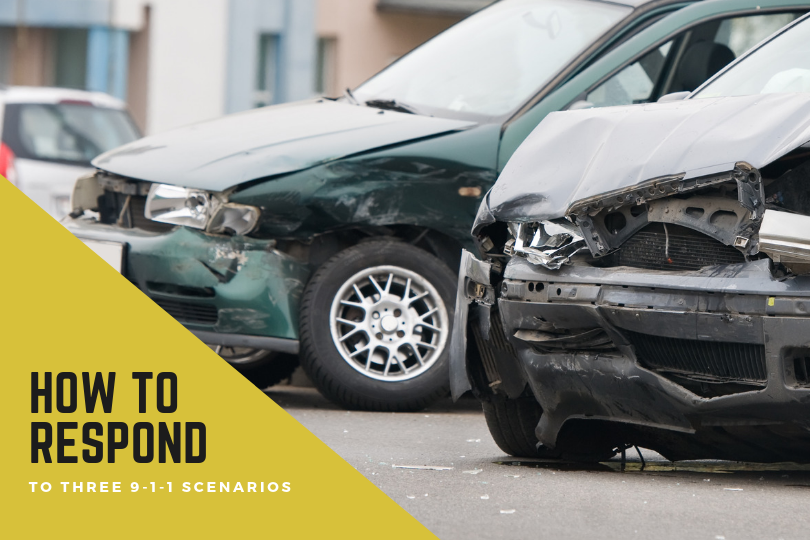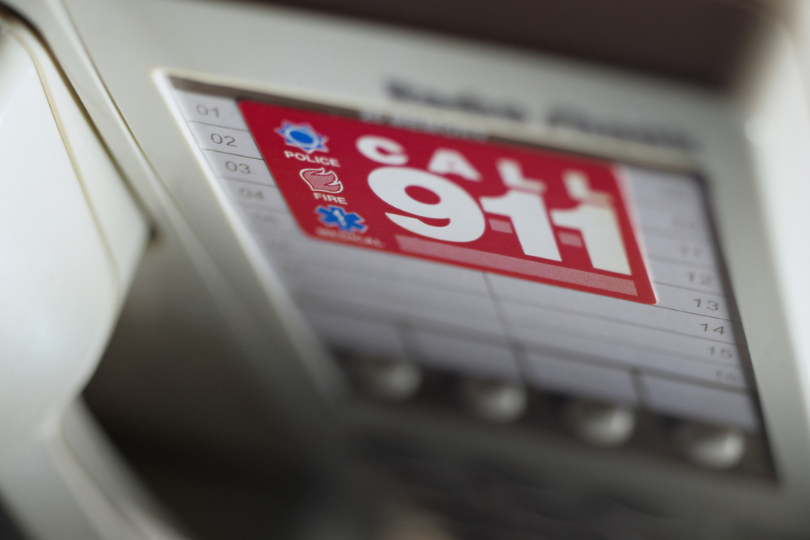How to Call 9-1-1 in 3 Different Scenarios
We don’t get to choose if or when an emergency strikes. We always advise 9-1-1 callers to stay calm and answer all of the telecommunicator’s questions but being prepared and knowing what to expect can help both you and the telecommunicator. You will always be asked to confirm your location regardless of the scenario, so be prepared to give your address and location, especially if you’re calling on a cell phone. This post will talk about how to call 9-1-1 in three different scenarios.
A Car Accident
Citizens have to call 9-1-1 to report a car accident they witnessed or were involved in. As always, the telecommunicator will need to know your location, but they may need some additional information to assist first responders like the direction of travel. Tell the call taker your direction of travel or the city you are driving towards. This will help them direct responders to approach the accident in the right direction.
The telecommunicator may also ask additional questions such as how many vehicles or persons are involved in the accident and if there are any injuries or road blockage. Listen carefully, stay calm, and answer all questions. Remember that your answers will help responders work with more efficiency once they arrive, and that the telecommunicator is not slowing response time by asking for these details. Telecommunicators are trained to simultaneously dispatch help and talk with caller, so don’t hang up until they say it’s okay.
A Suspicious Person
If you need to report a break in, a shop lifter, or someone acting suspiciously in a public place, you may need to describe a person to the telecommunicator. You’ll be asked a series of questions to help the responding officers locate the suspect, so try to remember these identifying features:
-Sex
-Race
-Age
-Height
-Clothing, including the color and type of material (Jeans versus khakis, for example)
-Identifying scars, marks, or tattoos
-Eye color or hair color
-Additional information
Additional information may include a variety of things, but some common ones may be whether the suspect has a weapon, is intoxicated or on drugs, or the suspect’s vehicle information. While this information is vital, never put yourself into harm’s way to obtain it. Remember to stay on the line until the call taker says it is okay to hang up.
A False Call
Whether you accidentally dial or catch your young child calling 9-1-1 to “test it,” there is one rule you should always remember: Don’t hang up. Telecommunicators must call back all 9-1-1 hang-ups, and if you don’t pick up, they might send someone to check on you. The best thing to do if you make a false call to 9-1-1 is to stay on the line, explain the situation, and again always wait until the call taker gives you permission to hang up. This will save time in the long run and prevent any misunderstandings or unwanted to house calls.
There are lots of reasons why you may need to call 9-1-1, and we can’t possibly cover them all. However, if you remember to confirm your location, answer all questions, and stay on the line, then you’ll be able to help the telecommunicator help you.



